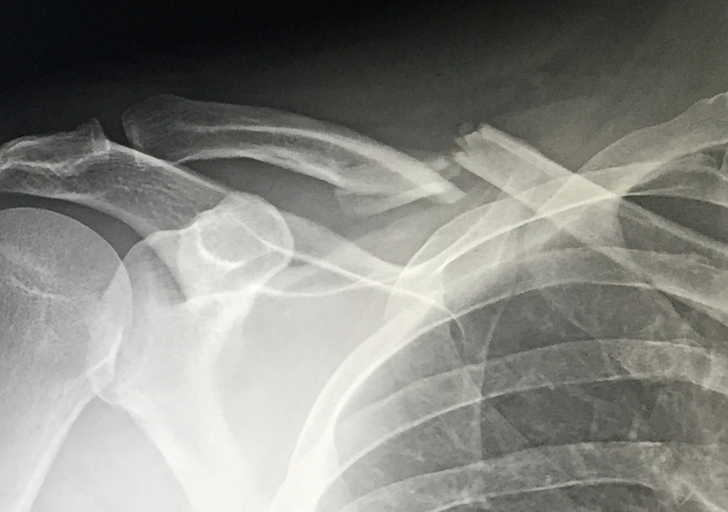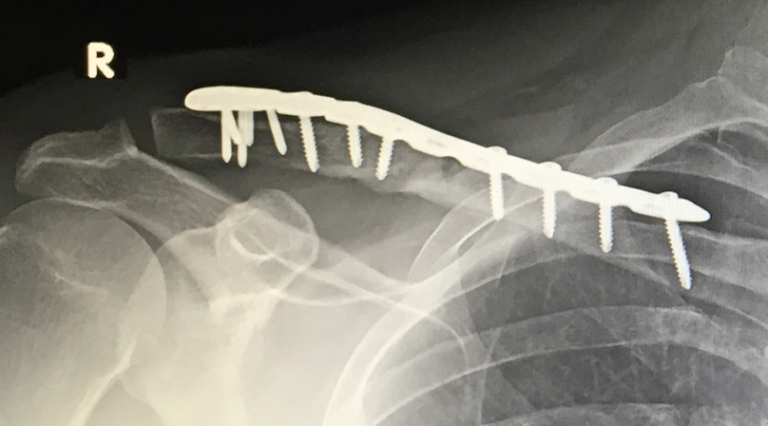
Shoulder Fractures
Introduction
A shoulder fracture is a broken bone. There are 3 bones that make up the shoulder: the clavicle, the humerus, and the scapula. The clavicle is the most commonly fractured shoulder bone. Fractures often occur due to significant trauma in younger patients including falls from a height, sporting injuries, and direct blows to the shoulder. Older patients typically describe lower energy injuries such as a fall from a standing height.

Symptoms/Signs
When a fracture occurs, patients experience severe pain, limited range of motion, swelling and often times bruising. Pain occurs with any shoulder motion and may be partially relieved with immobilization. Some patients notice deformity of the shoulder due to displacement of the bones from their normal position. The severity of symptoms can vary greatly depending on the type of fracture.
Evaluation
Your orthopaedic surgeon will review the history of your shoulder pain and perform a physical exam. X-rays are the primary imaging technique used to evaluate the bones of the shoulder and diagnose a fracture if present. Magnetic resonance imaging (MRI) and computed tomography (CT) may be ordered as adjunct imaging and can provide additional information related to your diagnosis and treatment.
Treatment
Non-Operative Treatment
The majority of fractures can be treated non-operatively. Sling immobilization is the most commonly utilized treatment. Non-steroidal anti-inflammatory medications are often prescribed to help with pain control. Sometimes, stronger pain medication is prescribed as well. Physical therapy can help patients regain their range of motion and strength after the fracture has healed.
Surgical Treatment

Some fractures do require surgical treatment and your orthopaedic surgeon will determine if surgery is indicated and discuss the risks and benefits with you. Surgery can be performed either in the hospital setting or in an ambulatory surgery center depending on a patient's general health. Surgery involves setting the broken bones and often times using a plate and screws to stabilize the fracture. Minimally invasive surgery and joint replacement are potential options for some fractures as well. After surgery, your shoulder is immobilized for a period of time in a sling to allow it to heal. Physical therapy is commonly recommended after fracture healing occurs to rehabilitate your shoulder. Most patients are able to successfully resume their normal activities and even sports after surgery.
